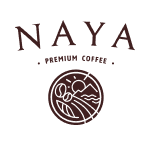Ah, summer! The sun is shining, the beaches are calling, and everyone is on the hunt for refreshing drinks to keep the heat at bay. For coffee aficionados, the options often boil down to two major contenders: cold brew and iced coffee. At a glance, they may seem pretty similar—they're both cold coffee, right? Well, not quite. The differences between the two are more substantial than you might think.
Let’s dive into the distinctions from brewing methods to flavor profiles to help you discover which chilled coffee delight best suits your summer sipping style.
Table of Contents
- Brewing Process
- Flavor Profile
- Caffeine Content
- Versatility and Customization
- Cost and Accessibility
- Final Thoughts
Brewing Process
Cold Brew
- Method: Cold brew coffee is made by steeping coarse coffee grounds in cold water for an extended period, usually 12 to 24 hours.
- Equipment: Large jar or cold brew maker, coffee filters.
- Temperature: Cold or room temperature.
- Brewing Time: 12-24 hours.
Iced Coffee
- Method: Iced coffee is simply regular hot-brewed coffee that is cooled down and poured over ice.
- Equipment: Regular coffee maker or French press, ice cube tray.
- Temperature: Hot, then cooled.
- Brewing Time: Varies, but usually less than 10 minutes.
Key Takeaway: Cold brew is a lengthy, cold-steeping process, while iced coffee is a quick brew using hot water that is then cooled down.
Flavor Profile
Cold Brew
- Smooth and Mild: The long brewing time and cold water extract fewer bitter compounds, resulting in a smooth and balanced flavor.
- Less Acidic: Cold brew can be up to 67% less acidic than hot brewed coffee.
- Sweeter Notes: The brewing process often highlights the sweeter, chocolaty undertones of the coffee.
Iced Coffee
- Strong and Robust: Because it's made with hot water, iced coffee retains the strong and robust flavors of its original brew.
- More Acidic: Can be harsher on the stomach due to its higher acidity.
- Wider Flavor Spectrum: The hot brewing process allows for a broader extraction of flavors, including floral and fruity notes.
Key Takeaway: If you prefer a smoother, more mild flavor with less acidity, cold brew is for you. If you like the robust, complex flavors found in traditional coffee, opt for iced coffee.
Caffeine Content
Cold Brew
- Generally lower in caffeine because of the longer steeping time and lower water temperature.
- Customizable caffeine levels by adjusting the coffee-to-water ratio.
Iced Coffee
- Typically higher in caffeine, as hot water extracts more caffeine from the coffee grounds.
- Caffeine content can be adjusted by using more or fewer coffee grounds during brewing.
Key Takeaway: If you’re looking for a stronger caffeine kick, iced coffee generally delivers more.
However, both types can be customized to suit your needs.
Versatility and Customization
Cold Brew
- Ideal for mixing with milk or flavored syrups due to its inherent smoothness.
- Can be used as a base for coffee cocktails.
- Easily batch-made for groups.
Iced Coffee
- Requires more care when adding flavors to avoid clashing with its natural bitterness.
- Can become diluted when ice melts.
- Best enjoyed immediately after brewing.
Key Takeaway: Cold brew offers more versatility for mixing and pairing, while iced coffee is often better for a quick, classic coffee experience.
Cost and Accessibility
Cold Brew
- Specialty coffee shops often charge more for cold brew.
- Can be more economical when made at home in larger batches.
Iced Coffee
- Usually cheaper at coffee shops.
- Faster and more convenient to make at home.
Key Takeaway: If you’re looking to save time and money, iced coffee is usually the way to go. For those willing to invest more for a distinct flavor and experience, cold brew might be worth the extra dollars.
Personal Preference
Choosing between cold brew and iced coffee really boils down to personal preference—your desired flavor, caffeine level, and even how much time you’re willing to spend making it. Each has its own set of benefits and drawbacks, but one thing is for sure: both are fantastic ways to enjoy coffee while beating the summer heat. So why not try both and discover your ultimate summer coffee companion? Cheers to a caffeinated summer!




